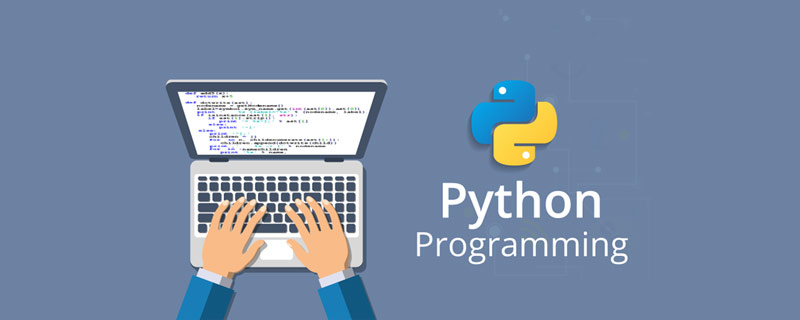Home >Backend Development >Python Tutorial >Is python object-oriented or process-oriented?
Is python object-oriented or process-oriented?
- coldplay.xixiOriginal
- 2020-09-27 16:14:2520051browse
Python is object-oriented. The first public release was released in 1991. Python syntax is concise and clear, and it has a rich and powerful class library.

Python is an object-oriented, interpreted computer programming language, invented by Guido van Rossum at the end of 1989, the first The public distribution version was released in 1991, and the Python source code also follows the GPL (GNU General Public License) agreement. Python syntax is concise and clear, with rich and powerful class libraries.
The difference between object-oriented and process-oriented
1. Process-oriented
1. Process-oriented: The core is process 2 The word process refers to the steps to solve a problem, such as designing an assembly line, which is a mechanical way of thinking.
It means that the program is executed step by step from top to bottom, and the problem is solved step by step from top to bottom, from beginning to end. The basic design idea is that the program starts with solving a large problem, and then decomposes the large problem into many small problems or sub-processes. These sub-processes are then executed and then continue to be decomposed until the small problems are simple enough to be solved in one Solved in small steps.
2. Advantages and Disadvantages:
Advantages: Streamline complex problems and simplify them.
Disadvantages: Poor scalability
3. Example: Procedural-oriented login and registration program
View Code
Note: It is generally believed that if you just write For some simple scripts to do some one-time tasks, the process-oriented approach is excellent, but if the tasks you want to handle are complex and require continuous iteration and maintenance, it is most convenient to use object-oriented.
2. Object-oriented
1. Object-oriented: The core is the word object, a combination of characteristics and skills.
2. Advantages and Disadvantages:
Advantages: High scalability
Disadvantages: High programming complexity
3. Application scenarios: User needs change frequently , Internet applications, games, intra-enterprise applications, etc.
4. Explanations of several terms about object-oriented Class: A class is a combination of similar characteristics and skills for a series of objects, like a template. The attributes and common methods that these objects have are defined in the class.
Attributes: Human beings contain many characteristics. If these characteristics are described by programs, they are called attributes. For example, age, height, gender, name, etc. are all called attributes. A class can have multiple attributes.
Method: Human beings not only have attributes such as height, age, and gender, but can also do many things, such as talking, walking, eating, etc. In contrast, attributes are nouns, and talking and walking are verbs. These verbs are programmed To describe it is called a method.
Instance (object): An object is an instantiated instance of a class. A class must be instantiated before it can be called in a program. A class can instantiate multiple objects, and each object can also be instantiated. It can have different attributes, just like human beings refer to all people, and each person refers to a specific object. There are commonalities and differences between people.
Instantiation: The process of converting a class into an object is called instantiation.
5. Simple Example
# 现实世界中的对象:
'''
对象1
特征
职业:学生
姓名:王二
性别:男
年龄:22
技能
学习
打游戏
对象2
特征
职业:学生
姓名:张三
性别:男
年龄:20
技能
学习
打游戏
看书
对象3
特征
职业:学生
姓名:婉婉
性别:女
年龄:18
技能
学习
打游戏
看书
现实中的类:
特征:
职业:学生
技能:
学习
打游戏
看书
在程序中:
'''
# 先有类
class School_learn:
job = 'student'
def study(self):
print('study hard!')
def play_game(self):
print('play games as little as you can')
def read(self):
print('read books more and more')
# 再调用类产生对象
student1 = School_learn()
student2 = School_learn()
student3 = School_learn()
print(student1) # <__main__.School_learn object at 0x000002B70F8D7588> 对象
print(student2)
print(student3)3. Three major characteristics of object-orientedf35d6e602fd7d0f0edfa6f7d103c1b57Encapsulation: Encapsulation of data in classes The assignment and internal calls are transparent and invisible to external users, which turns the class into a capsule or container, which contains the data and methods of the class.
2cc198a1d5eb0d3eb508d858c9f5cbdbInheritance: A class can derive a subclass, and the attributes and methods defined in the parent class are automatically inherited by the subclass.
5bdf4c78156c7953567bb5a0aef2fc53Polymorphism: Polymorphism is an important feature of object-oriented. To put it simply: "one interface, multiple implementations" means that different subclasses are derived from a base class. , and each subclass inherits the same method name and implements the method of the parent class differently. This is the multiple forms of the same thing.
Note: Here is just a brief explanation of several major features, we will discuss them in depth later.
More related free learning recommendations:
The above is the detailed content of Is python object-oriented or process-oriented?. For more information, please follow other related articles on the PHP Chinese website!

